Kusoge Advent Calendar 2017: Week Three
Okay, so before we get started this week, I’d just like to remind everyone that the $10 bounty for explaining this…event…in Twinkle Queen is still unclaimed. There’s a good chance it’ll stay that way forever, and honestly, I can’t blame any of you.
I don’t think I have anything else to say. You know what you’re here for. Go read the other articles if you haven’t already, I guess.
#15: Primal Rage 2
Primal Rage 2 differs from the original Primal Rage in two important ways. The first is that you can actually play it. The second is that you can’t play it.
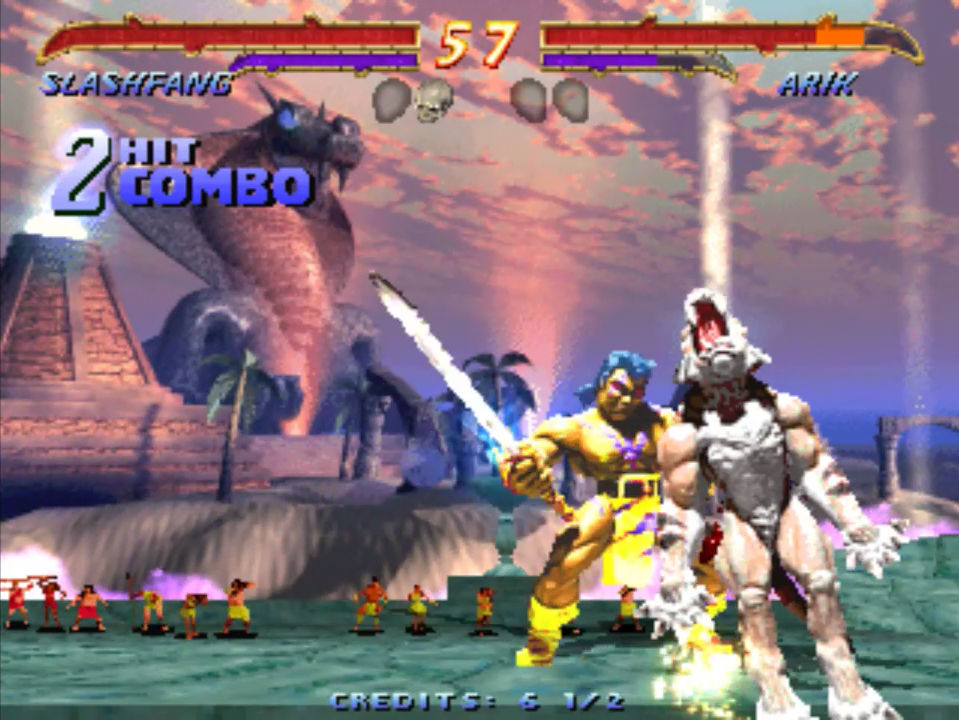
What I mean by that is that Primal Rage 2 doesn’t exist; what’s left of it is a half-functional rip from a location-test cabinet. Atari canned the game before it ever saw the light of day, and the only way to get it working is a custom build of MAME (and some patience with savestates). The result is…actually pretty okay?
Primal Rage 2’s…unorthodox visuals and troubled non-origin had me expecting a dumpster fire. Instead, it’s a perfectly servicable Midway-era fighter, with some mildly interesting systems and a good amount of stupid, campy-looking violence, fatalities and all. Every character has a straightforward 4-button moveset with traditional motions, juggles have perfectly functional progressive gravity, and the game plays at a smooth, measured pace—none of which anyone should take for granted, considering the original Primal Rage, but it’s still almost a disappointment.
Honestly, besides a few wacky moves, the most interesting part of Primal Rage 2 is its character select screen. “““““Normal””””” characters, the ones on the first row of the character select screen, have access to a pair of ranbu supers where they temporarily transform into monsters. Those monsters are actually fully playable characters, with distinct assets and movesets, and they have ranbus that temporarily transform them into their respective humans—but they’re only accessible on a secret row of the selection screen. Then there’s a second secret row where you play as both forms, giving up supers for the ability to transform at will. I never would have found either of them on my own, and I have no idea why they were hidden like this, since none of them seem to be obvious boss-tiers or anything.
I won’t shed any tears for Primal Rage 2’s unusual demise, but it gets some points for improving on its predecessor and showcasing a Pretty Good Fighting Game Idea. Makes me wonder how it could have been different at release.
VERDICT: REAL-ASS
Freyaday: My ability to parse fighting games is so shit I have trouble telling a good one from a bad one. But this game felt like it had something there. Something “real”, in TyroneSama-speak. It’s just that I remember it better for the conversation we had over whether the game was pre-rendered 3D or claymation—which lead to me screaming “Self-shadows!” in evidence that the sprites were scanned-in clay.
Oh, before I wrap this section up, shoutouts to Gruntzilla94’s Primal Rage 2 fansite, which is the only organized collection of information we could find about the game and seems to be maintained by one guy. Despite the notation system that seems to have been designed by aliens (have a look and try to figure it out), it was an invaluable resource and we would have missed a lot without it—thanks!
#16: G.A.S.P!! Fighters’ NEXTream
No, dude. Nooooo. No. God dammit. No! No! Fucking shit. God fucking dammit. Dude, no. No. Fuck! Jesus, no. God dammit. God fucking dammit, no.
I’m so mad.
You ever had a new puppy? They’re disasters. Inevitably, it shits on the floor or eats one of your socks, and there’s this little flash of anger—just a small one, and just for a second, before it’s immediately replaced by exasperated resignation and shame. You can’t be angry at the dog. The dog doesn’t even know what it did. It didn’t want to hurt you; it doesn’t even know how.
That’s how I feel about G.A.S.P!! Fighters’ NEXTream. You can’t be angry at the dog, and somehow it makes things even worse.
It took me a while to arrive at that conclusion, because G.A.S.P!! (or Deadly Arts in the USA) is an emotional rollercoaster that cries out for some kind of explanation. The game’s recieved so much care, countless hours of effort from a skilled team of Konami veterans, and every ounce of it is wasted. G.A.S.P!! is so overwhelmingly stiff and unresponsive, even compared to its contemporaries, that it’s genuinely unplayable—not in the same way that something like Superman 64 is unplayable, but in the same way you cannot lift the Earth.
I guess it was Konami’s first attempt at a 3D fighter. That would explain why so many things in G.A.S.P!!’s periphery went right—destructible stages, a strangely deep custom character creator, a lush synthesized soundtrack full of eclectic new-age beats—and how much of its core went horribly wrong, with movement systems like an 18-wheeler upside down in a muddy ditch, eons of excruciating startup on every offensive option.
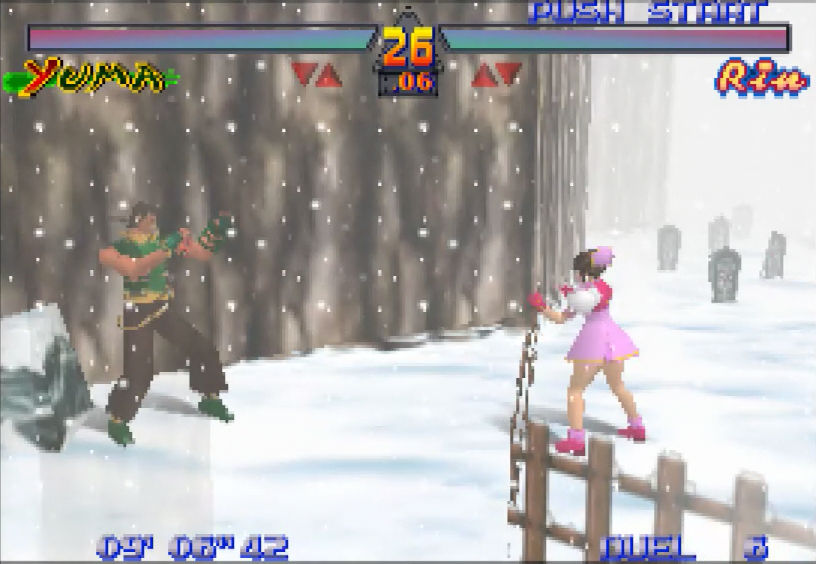
The huge leaps in quality are uniquely frustrating. Like, okay, there are two unique bosses in the main single-player mode, each with their own gorgeous unique stage and theme. Halfway through the first round, the final boss stops the timer to transform into a totally new character, complete with a unique moveset. Next round, he does the same thing, except he transforms into a different totally new character with a unique moveset. That’s four extra characters added to the end of the game purely for effect—and yet they couldn’t figure out how to make a character walk forward without a half-second delay.
Even basic systems like the timer are questionable; the weakest AI opponents will frequently timer-scam you by accident, since rounds are only 30 seconds and damage is nonexistent, and ties are decided by a style-based scoring system, not life lead. Same for knockdowns, which inexplicably restore health if you mash the C-buttons while you’re waking up, making it even more impossible to kill within the time limit. It’s a mess; it doesn’t look bad from a distance, sure, but no one could ever pick up the controller without immediately discovering G.A.S.P!!’s gaping holes. So what happened?
I was really young when I first got my N64, and like most young kids, I didn’t really know how to tell the difference between good and bad video games; the actual gameplay was kind of a formality to me. I was effectively a bonobo at the controls, aimlessly kicking around Ocarina of Time’s starting area with no knowledge or desire of any long-term objective or goal. Games were these weird smears of their component parts, a blurry sandbox of emergent bits, vehicles for carrying their mood and a vague sense of confused wonder. In that way, Young AJ would have thought G.A.S.P!! was the greatest game ever made.
I’m sad I didn’t play it then, and I’m irrationally angry that I’ve played it now.
VERDICT: ASS
#17: Ragnagard
DO YOU WANNA FUCKING RUSHDOWN
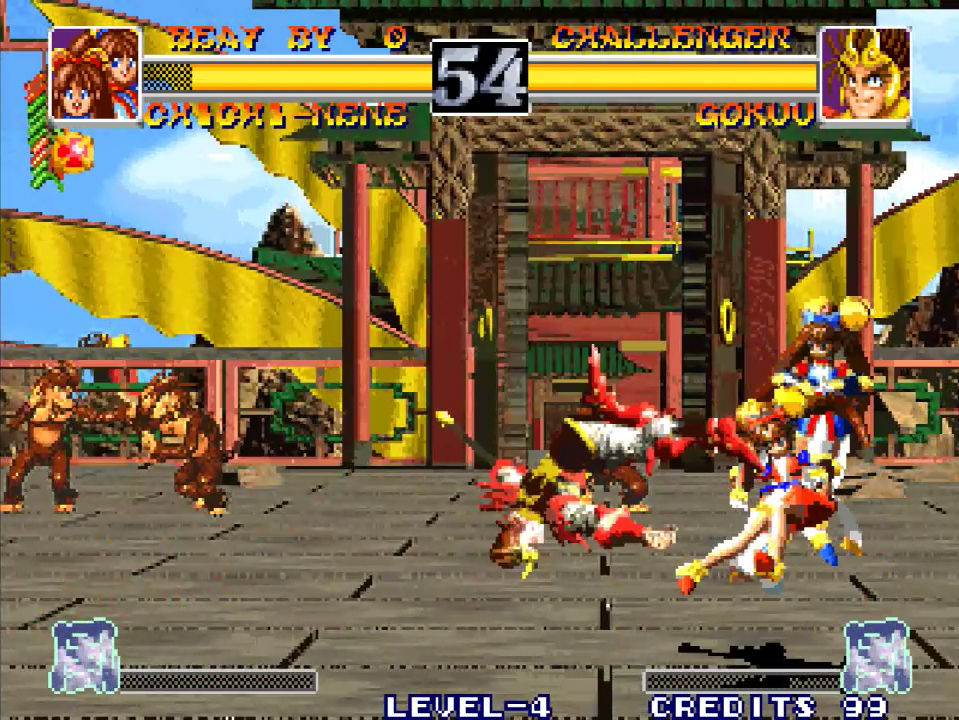
Ragnagard is an experimental 1996 Neo Geo title, designed as part of a larger initiative to test whether apes could be taught to play fighting games. Every character has a low-altitude hoverdash, there are no backdashes, and four low shorts into a sweep nets you 40% life and an exploitable hard knockdown. I have never felt so stupid while winning.
There’s some mechanics in here, like universal launchers and a weird elemental attunement system, but none of them seem to matter as much as your ability to block high/lows. I’ll forgive a lot of flaws for the sake of fun movement, though, and Ragnagard’s movement systems have a lot of freedom for the time, with plenty of responsive aerial play despite the sluggish ground game. There’s some pure, stupid joy in the kind of dumb animal shit this game lets you do to your opponents.
The pre-rendered characters have aged as prerenders tend to do—despite some impressive framecounts on intro and idle animations, they’re all stiff, dithered plastic, with clumsy animations that feel out of place for such an aggressive game. For extra bitterness, read Gaming.moe’s interview with Hiroaki “Powerudon” Fujimoto, an artist and designer for Ragnagard and the SNES fighter Battle Master:
“I finally thought I’d have the chance to show my pixel art to the world on the same stage as SF2, and then that happened. Most brutal decision of my life.”
I enjoyed my time with Ragnagard, but I don’t think I have any reason to come back to it. It left a confused haze of an impression that, after many months of reflection, resolved into “so that’s why people play Guilty Gear.” I asked Freyaday to bail me out and write something about it instead, and he went off on a sprawling tangent about the impermanence of memory—which, for once, I don’t think was his fault.
VERDICT: REAL-ASS
#18: Naruto Ultimate Ninja 5
Here’s yet another entry in the “TyroneSama Attempts To Comprehend Anime” series. I assume this has a comprehensive roster of iconic Naruto characters, and I’m willing to bet that they’re all faithful recreations, with their signature moves and fighting style intact. I do not care. I am so, so tired.
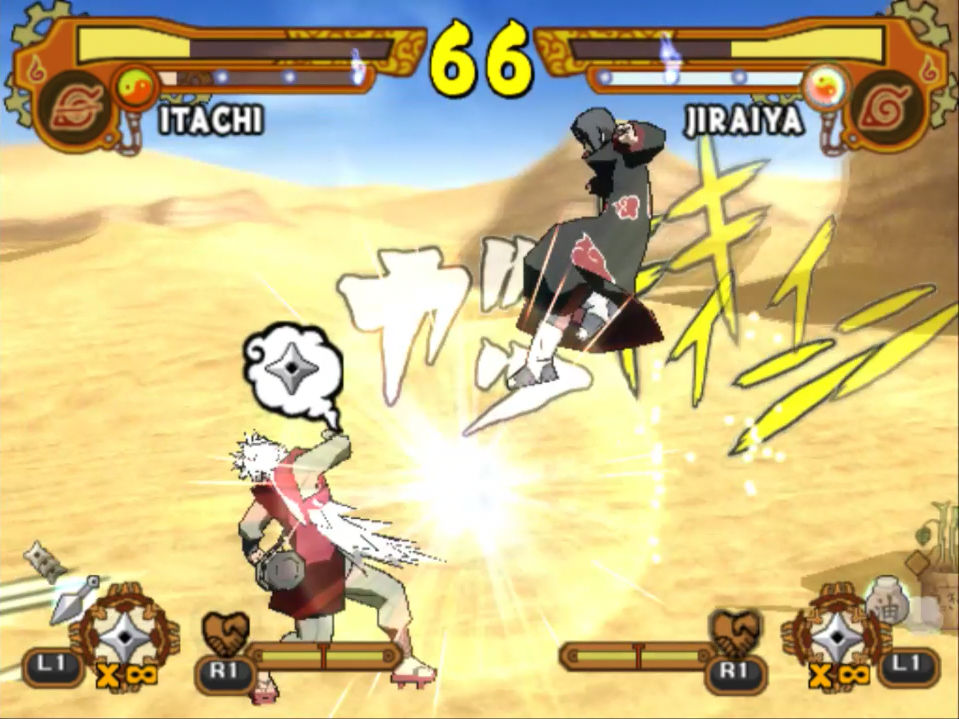
Before I go any further with this section: I fucked up. I got the European release instead of the Japanese one so I could actually read the menus, not realizing that the PAL region disc ran at a painful 25fps, compared to NTSC-J’s slightly more managable 30. I also played on PCSX2, which is a gigantic goddamn mess of an emulator despite its admirable attempts at trying: combine the framerate mismatch with an emulator that has some pretty serious display lag problems, and the result is a far cry from the intended experience on original hardware—my impressions are colored thanks to that.
It’s still a 30FPS licensed Naruto fighter. I didn’t miss out on a hidden gem or anything. But just keep that in mind.
Anyway, Ultimate Ninja 5 is a two-plane 2D fighter based on a popular anime franchise, which means I’m contractually obligated to compare it to Yu Yu Hakusho: Makyō Tōitsusen, a similar game I covered in 2016’s Kusoge Advent Calendar.
| Naruto Ultimate Ninja 5 | Yu Yu Hakusho: Makyō Tōitsusen | |
|---|---|---|
| Multiplayer | 1-2 players | 1-2 players (1-4 with multitap) |
| Responsive movement | X | ✓ |
| Straightforward combo system | X | ✓ |
| Team play | X | ✓ |
| Framerate | No | Yes |
| Isn't Dynasty Warriors | X | ✓ |
| Assist system | Degenerate disjointed bullshit | Honest One-Man Gameplay |
| Has a homing dash | close enough | X |
| Music | Lame anime soundtrack | Kickass YM2612 goodness |
| Emulates well | X | ✓ |
| Certified V-ism free | X | ✓ |
| Wait hold on | what | what |
| Did that say "Isn't Dynasty Warriors" | uh | uhhhhhhh |
Okay, fighting game single-player can have some variety in it, whether it’s Persona 4 Arena’s level-grinding Golden Arena or Soulcalibur II’s mutated Weapon Master Mode—but given the constraints of the genre, no matter how you structure it, it’s gonna be a bunch of AI fights, right?
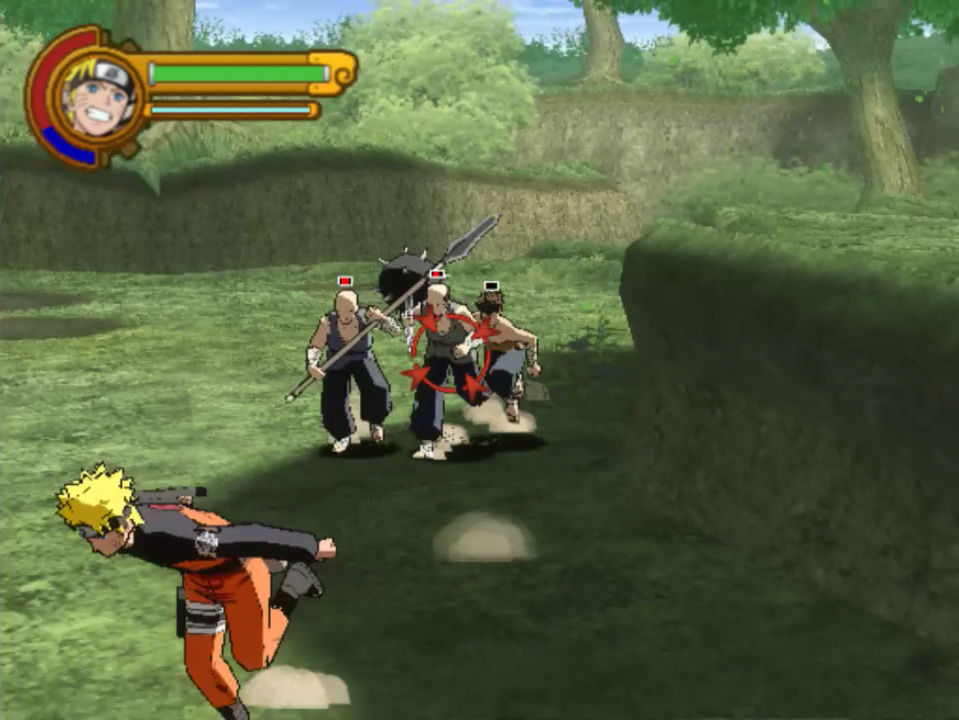
I should really know better.
There are a lot of weird fucking things I could talk about—the bird-assisted timer scam, or the item system that has absolutely no reason to exist, or the bizzare number of taunts that double as powerup supers if you let them run for completely impossible amounts of time. But the most incomprehensible thing about Ultimate Ninja 5, besides the fact that this series was able to financially survive 5 games, is that its single-player mode is a completely different game. Like, they just took the remmnants of what I assume was a canceled Naruto brawler, shoved them into an anemic and wheezing Paper Mario-style structural shell, and shipped it with NO FUCKING FEAR.
I honestly have no idea how anything like this game comes t

oh
VERDICT: ASS
Zari0t: Where did PAL go so wrong.
#19: Tatsunoko Fight
I like to imagine that this game came in a blank gray box with the words “FIGHTING GAME” on the front in black lettering. It’s minimum viable product. It’s there.
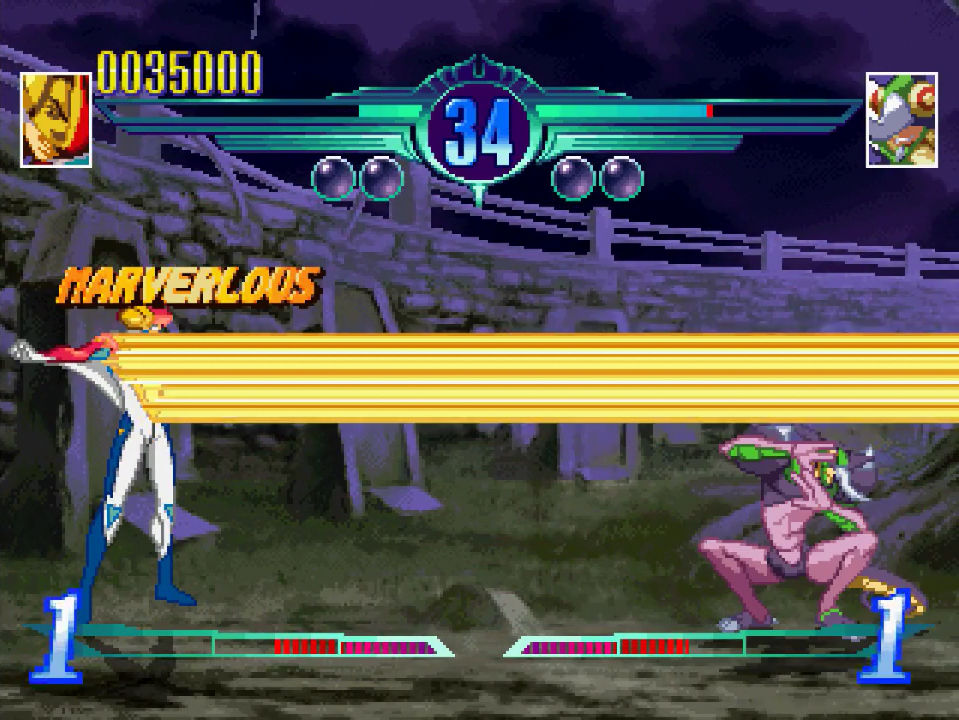
I almost feel like Tatsunoko Fight was scared of me. It saw what came before it and curled into a protective ball, afraid to expose any mechanics in case I chopped them off to dissect them. The result is a game with slow and straightforward movement, anemic movesets, and a bizzarely restrictive combo system.
To be fair, this one probably falls under “TyroneSama Attempts To Comprehend Anime” too; if you’re a Japanese-speaking fan of Tatsunoko superhero shows, there might be something for you here, with several voiced story modes and a surprising amount of music crammed onto the disc (no guarantees it loops correctly). Maybe that’s all you want. As for me, everything I know about Tatsunoko comes from halfassed labwork in Tatsunoko vs. Capcom—see my Batsu—and if a game’s not going to be fun, I at least expect it to be fucked up.
Nothing in Tatsunoko Fight is really all that broken, though. There’s a few tight links between specials and special-cancellable normals, deep jump-in combos almost always end in stun, and damage is pretty high if you’ve got meter to spend…and that’s it. I was able to fireball trap the AI, but from my limited testing, it was the AI freezing up, not real blockstun. I guess it’s at that perfect equilibrium, too broken to be honest but not broken enough to be a spectacle. Like, when you have to lead into your combo video with an apology, you know there’s something going on.
I guess it looks all right.
VERDICT: ASS
Abbock: in retrospect it’s not all that interesting of a kusoge, but maybe slightly dull is exactly what you needed at the time. dunno, but something is just so perfect about your super meter’s max level being LEVEL SEAHORSE. actually, that is somewhat interesting, as simple as it is. only one super, and it takes all meter, but the level determines damage. oh wait nvm that’s just ultras isnt it
#20: Bleach: Dark Souls
Bleach: Dark Souls is a two-plane 2D fighter based on a popular anime franchise, which means I’m contractually obligated to compare it to Yu Yu Hakusho: Makyō Tōitsusen, a similar game I covered in 2016’s Kusoge Advent Calendar.
…wait
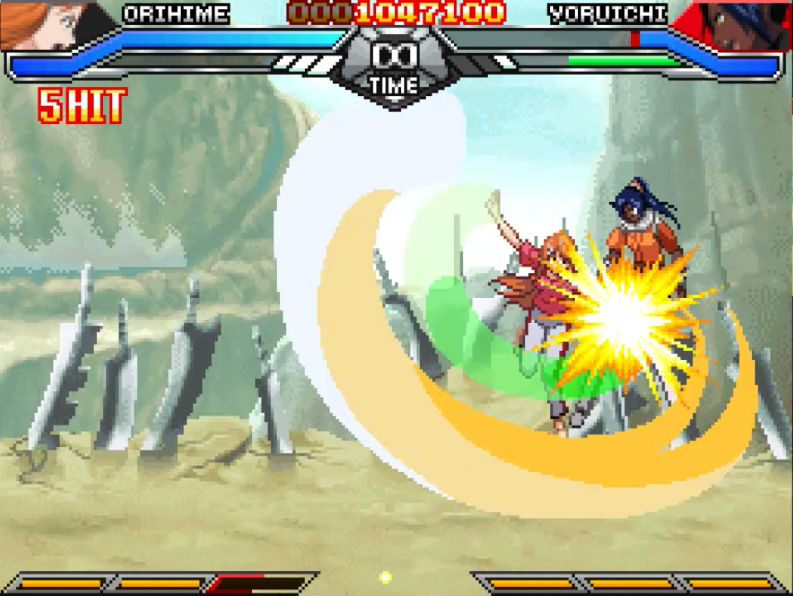
Treasure graces us again with another weird 4-player 2-plane anime scramble—man, I really should have saved that gag for this section—this time for the Nintendo DS. Besides a weird vestigial card system and some extremely questionable powerup supers, this…actually mostly plays like a half-decent fighting game?
Like, it’s not going to win any awards for groundbreaking gameplay, but if you’ve ever played an anime fighter it honestly feels pretty comfortable. Light-medium-heavy chains, universal launcher, two jumps and an airdash, and relative freedom to move around the screen and hit buttons whenever you want. Hit effects are satisfying, though the crunchy voice samples packed onto the cart are not, and damage seems to be fairly reasonable across the board; actually, for a one-round game, it seems a little too low, which is the opposite direction I expected.
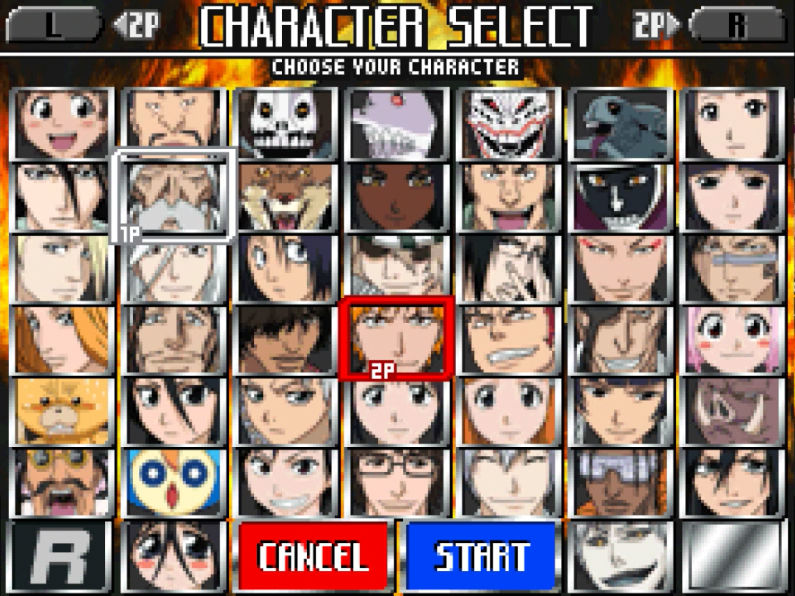
Sleepmode, leading kusoge expert and absolute madman, tells me this game apparently has:
- restand combos possible only after wallbounces by timing a meaty low on the exact frame your opponent hits the ground, which apparently were known and even encouraged by the developers
- absolutely no chickenblocking protection of any kind
- extended throw invulnerability after blockstun ends that completely murders any idea you might have had of attempting a tick throw
- no less than fucking six joke characters, one of whom is just Ryu but a one-inch high teddy bear
- I am done reading about this
VERDICT: REAL-ASS
Zari0t: I played this competitively for a solid month and a half. [Author’s note: I considered deleting the rest of this comment.] I’m sad that I never got into the real nitty-gritty of things, but it was still a pretty fun experience while it lasted.
It’s worth noting that this game’s netplay over Nintendo WFC was somehow amazing. I didn’t even know the DS could do that, but I swear I had matches from EU to NA in this game that felt smoother and less laggy than some recent releases within my own continent.
Sleepmode: Treasure have always been the kings of unorthodox yet surprisingly functional game design, and the Bleach DS fighting games are no exception. There’s a lot of interesting nuance to the movement and combo systems, and while it suffers from some admittedly lazy design (the difference between light/medium specials just being startup/recovery time) and arguably being inferior to its predecessor (of course you have actual opinions on this shit, Sleepmode), it’s honestly impressive for being a fighting game that felt like it was truly designed for a handheld system. Also for being basically Guilty Gear Isuka but not total dogshit.
BONUS: this game’s predecessor, Bleach: The Blade of Fate, while technically being the first of the two games in terms of release order, is actually more recent in terms of balance changes. The Japanese release of BoF got rebalanced for the Western release, but the same didn’t happen for DS.
It’s been nearly 3 weeks. I’ve started to divide my life according to the games that define it. Wake, play, struggle with comprehension, sleep.
The sun rises on the day after Bleach: Dark Souls. It’s December 21st, 2017. I leave for the airport bright and early tomorrow morning, en route to Fuckoff County somewhere in the remote Midwest. It’s nearly Christmas, and it’s been too long since I’ve seen my family.
But today, I have a mission to carry out. There is a calendar that needs marking.